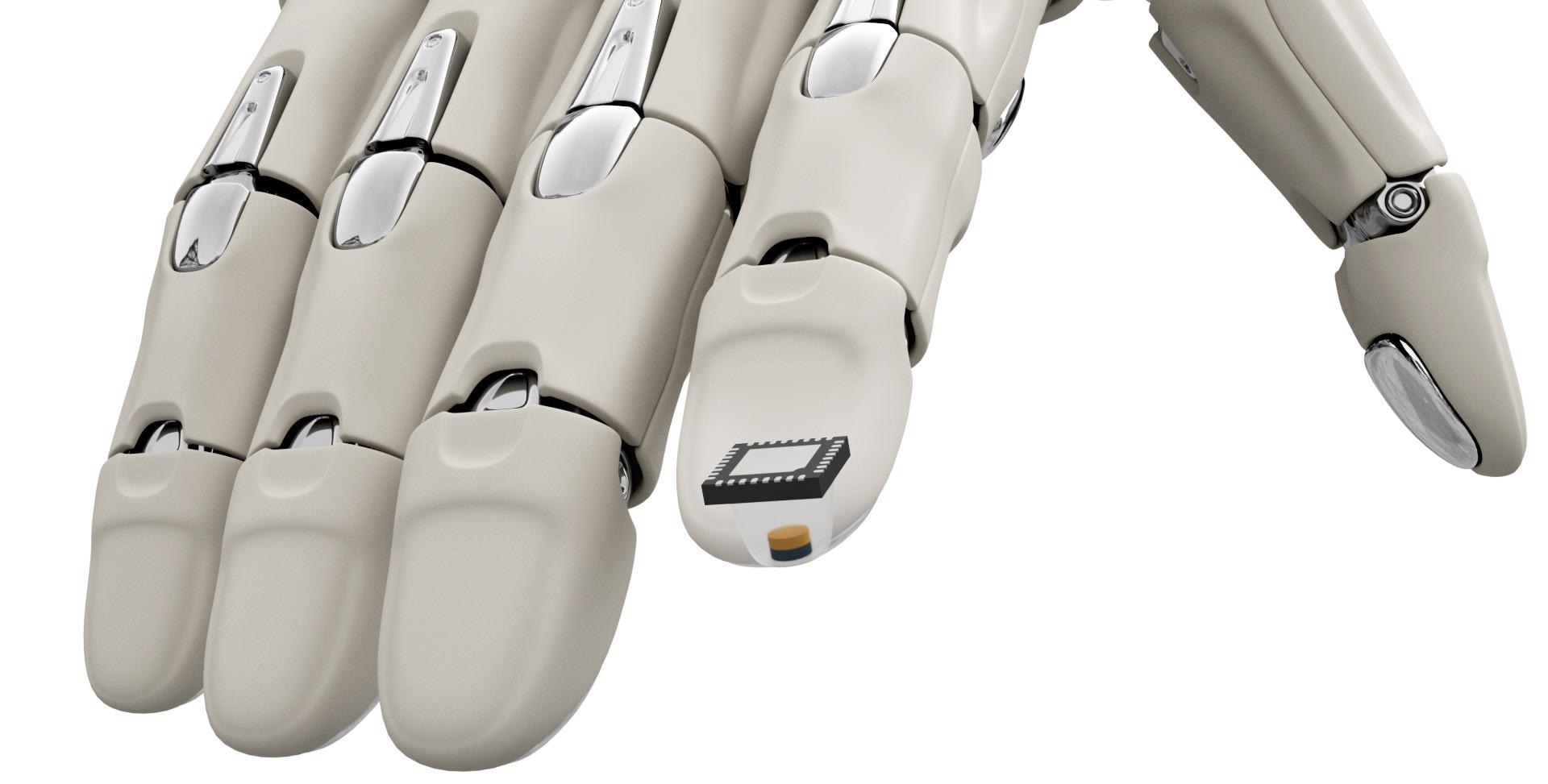Melexis has made a major innovation to improve robots’ ability to interact with fragile or diverse objects. The company has unveiled Tactaxis, a fully integrated tactile sensor that is compact, soft and provides the 3D force vector acting on its surface. This improves robots’ hands and grippers, making delicate operations such as fruit picking possible. The technology is successfully implemented in a functioning prototype.

Image Credit: Melexis
The ground-breaking prototype features multiple 3D magnetometer pixels, using Melexis’ industry-proven Triaxis® technology. The sensor is accompanied by a magnet which is embedded into an elastomer material. This presents a soft contact interface, emulating the attributes of human skin. The arrangement offers a high sensitivity so that detection of even small amounts of force will generate a response. The achieved force resolution is 2.7 mN which is enough to distinguish weight change of a fraction of a gram (~ 0.3 gram).
The Tactaxis prototype is highly compact (with dimensions of just 5 mm x 5 mm x 5 mm) and therefore suitable for tight spaces.
The gradiometric approach makes the sensor immune to magnetic stray fields. This prevents potential measurement errors. It is also robust enough to cope with harsh conditions (temperature variations, etc.). Unlike competing optically-based tactile sensors, Tactaxis is completely integrated. It will be possible to produce high volumes of factory-calibrated sensors. This semiconductor process results in major cost and reliability benefits.
“Robots need the sense of touch to manipulate fragile objects. For such applications, we have developed a novel magnetic sensor to accurately measure the contact force while being robust against disturbances,” explains Gael Close, Global Innovation Manager at Melexis. “By exploiting the capabilities of our Triaxis® magnetic sensor technology, we have made a significant step forward in robot tactile sensors, providing a rugged and competitive multi-axis sensing solution. We will now use the Tactaxis prototype as the foundation for further development work.”
A white paper giving details on the Melexis 3D magnetic force sensor prototype has been published by IEEE (Institute of Electrical and Electronics Engineers): T. Le Signor, N. Dupré, and G. Close, "A gradiometric magnetic force sensor immune to stray magnetic fields for robotic hands and grippers", IEEE Robotics and Automation Letters, Jan. 2022. https://dx.doi.org/10.1109/LRA.2022.3146507